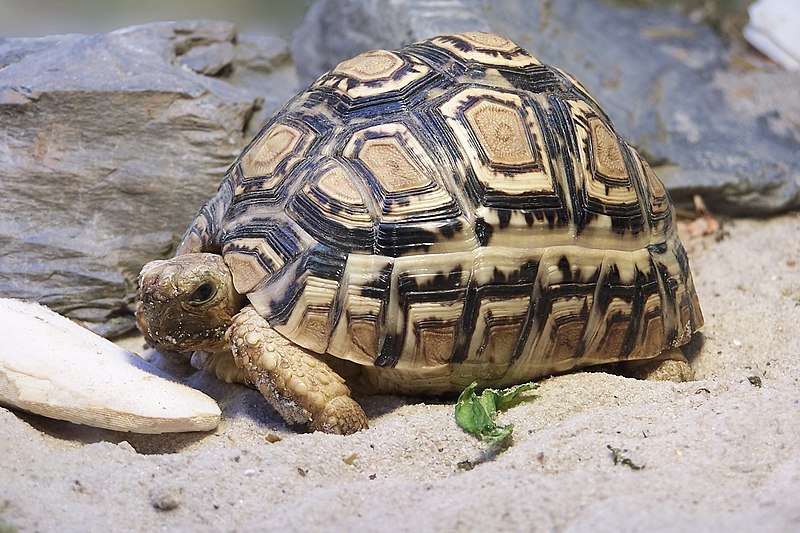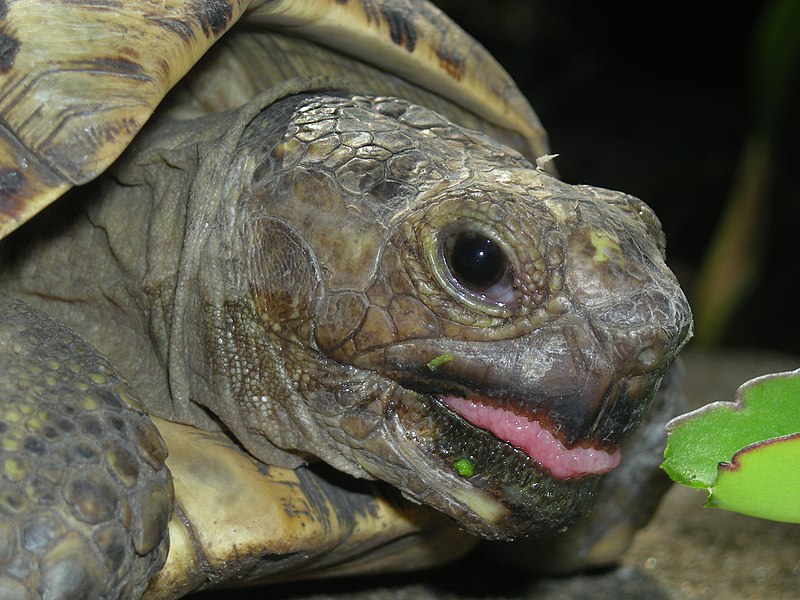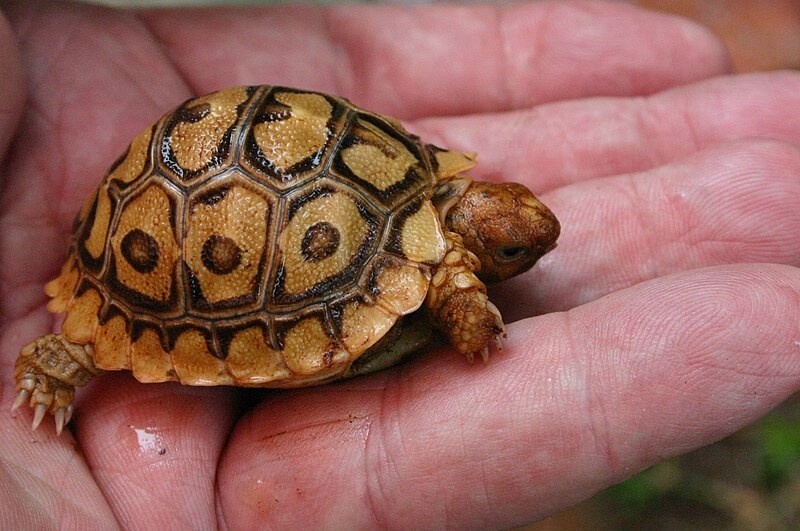The Leopard Tortoise Stigmochelys (formerly Geochelone) pardalis, stands out in both attractiveness and personality among a group of reptiles well known for possessing both attributes. Although among the most responsive of reptile pets, their very specific husbandry needs must be met if they are to thrive. An understanding of the Leopard Tortoise’s natural habitat and habits is very useful in helping to keep and breed them in captivity (please see Part II).
Description
 The Leopard Tortoise sports a highly-domed carapace (upper shell) that may exceed 28 inches in length. Males, the larger sex, may top 80 pounds in weight, although most are smaller.
The Leopard Tortoise sports a highly-domed carapace (upper shell) that may exceed 28 inches in length. Males, the larger sex, may top 80 pounds in weight, although most are smaller.
The shell is tawny-yellow or buff in color and mottled with black, brown and olive markings. Individual tortoises vary widely in pattern, ranging from almost pure yellow to nearly black. The limbs and head are yellow or tan. Hatchlings are yellow with clearly-defined black spots.
Classification
The Leopard Tortoise in one of 53 described tortoise species. Tortoises reach their greatest diversity in Africa, but also are found in North America (where 4 species reside), Europe, South America and Asia. Tortoises are absent from Australia and Antarctica.
All tortoises are terrestrial and feed mainly on vegetation. They range in size from the 4-inch-long Speckled Tortoise, Homopus signatus, to the Aldabra Tortoise, Geochelone gigantea, whose carapace approaches 5 feet in length.
Range
Leopard Tortoises are native to eastern and southern Africa and occur from southern Sudan and Ethiopia through eastern Africa to South Africa and west to southern Angola and Namibia.
Habitat
 This is a tortoise of open, sunny habitats – savannas, lightly wooded grasslands, kopjes (large rock outcroppings) and thorn scrub – from sea level to 9,000 feet above; it avoids heavily forested areas.
This is a tortoise of open, sunny habitats – savannas, lightly wooded grasslands, kopjes (large rock outcroppings) and thorn scrub – from sea level to 9,000 feet above; it avoids heavily forested areas.
Leopard Tortoises do not construct burrows but rather push into brush during the heat of mid-day. They are inactive during the winter in South Africa.
They maintain fairly distinct home ranges and have acute homing abilities. Individuals transported 8 miles from their collection site have unerringly returned, even climbing fences and debris piles to do so.
Diet
Leopard Tortoises feed largely upon various grasses and other course, fibrous plants. Mushrooms and other fungi, fruits, and carrion are taken in small quantities when available, but should not be part of the captive diet (Please see Part II of this article).
Status in the Wild
Massive declines have been documented due to collection for the pet and food trade and habitat loss; listed on Appendix II of CITES.
Reproduction
 Both males and females butt rivals in an attempt to overturn or drive them off. Males chase females for long distances, biting and ramming in an attempt to immobilize them. First time tortoise keepers are often surprised to find that males are surprisingly vocal during copulation!
Both males and females butt rivals in an attempt to overturn or drive them off. Males chase females for long distances, biting and ramming in an attempt to immobilize them. First time tortoise keepers are often surprised to find that males are surprisingly vocal during copulation!
Females lay eggs from May-October, often taking over 2 hours to dig the nest hole; 5-7 clutches of 5-30 eggs each may be produced each year. Egg output is related to the size and condition of the female and to food availability. The incubation period is among the longest know for any turtle, and can exceed 18 months during drought years.
Further Reading
Tortoise farming, while a god idea in theory, does not always work out very well. Please see this report on Leopard Tortoise Farms in Tanzania for further details.
A video of a Leopard Tortoise in its natural habitat is posted here.
Geochelone pardalis image referenced from wikipedia and originally posted by Berthold Werner
Leopard tortoise eating image referenced from wikipedia and originally posted by Muhammad Mahdi Karim
 That Reptile Blog – Reptile, Amphibian and Exotic Pet Care and Information
That Reptile Blog – Reptile, Amphibian and Exotic Pet Care and Information


